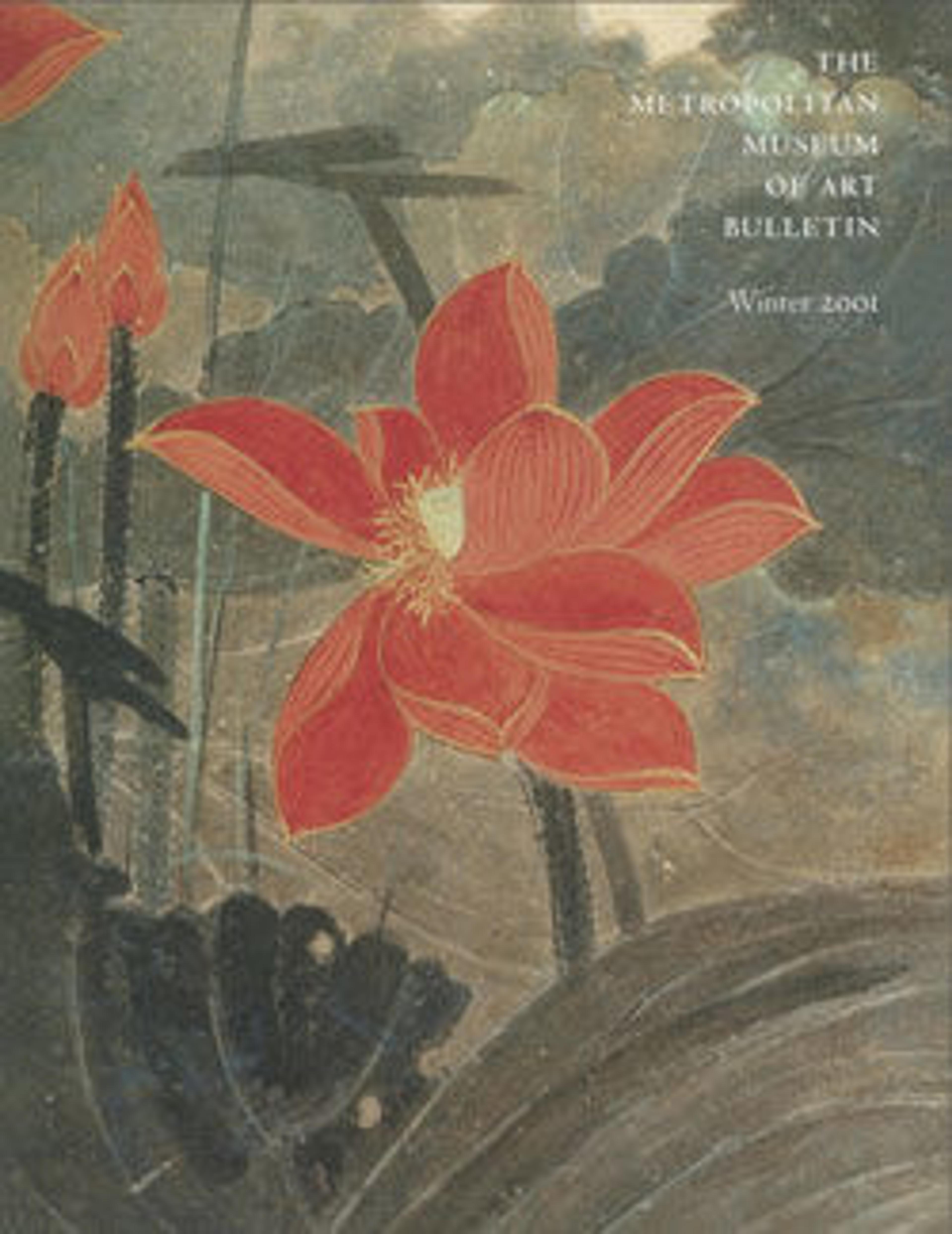Bodhidharma
This painting, done when Qi Baishi was visiting Beijing, presents an image of the fifth-century Chan (Zen) patriarch that is accessible yet monumental. The monklike robe, shoe, and stubble of his shaven head are details that give Bodhidharma a contemporary appearance-not unlike Qi himself. But Qi's vision of the master remains beyond our reach. Except for cursory highlighting around the eye and cheek, Qi avoided Western-influenced tech-niques for rendering form and concealed most of the figure beneath the engulfing robe.
Bodhidharma is depicted against a blank background; only the straw prayer mat and the hem of the robe hint at three-dimensional form. Although the bold outlines of the garment and the blunt, square calligraphy of the inscription show close stylistic affinities with the epigraphic school of writing practiced by Zhao Zhiqian (1829–1884), the expressive portrait exhibits the simplicity and directness that characterized Qi's mature style of the 1920s. In his inscription Qi reflects on his inspiration-a visit to Mount Song, where Bodhidharma meditated for nine years-and takes pleasure in acknowledging his own growing critical recognition. He recalls a poem about his painting of a Bodhidharma hung in a Beijing shop that inspired him to repeat his performance here.
Bodhidharma is depicted against a blank background; only the straw prayer mat and the hem of the robe hint at three-dimensional form. Although the bold outlines of the garment and the blunt, square calligraphy of the inscription show close stylistic affinities with the epigraphic school of writing practiced by Zhao Zhiqian (1829–1884), the expressive portrait exhibits the simplicity and directness that characterized Qi's mature style of the 1920s. In his inscription Qi reflects on his inspiration-a visit to Mount Song, where Bodhidharma meditated for nine years-and takes pleasure in acknowledging his own growing critical recognition. He recalls a poem about his painting of a Bodhidharma hung in a Beijing shop that inspired him to repeat his performance here.
Artwork Details
- 清/現代 齊白石 達摩像 軸
- Title: Bodhidharma
- Artist: Qi Baishi (Chinese, 1864–1957)
- Date: dated 1913
- Culture: China
- Medium: Hanging scroll; ink and color on paper
- Dimensions: 32 5/8 x 17 7/8 in. (82.9 x 45.4 cm)
- Classification: Paintings
- Credit Line: Gift of Robert Hatfield Ellsworth, in memory of La Ferne Hatfield Ellsworth, 1986
- Object Number: 1986.267.208
- Curatorial Department: Asian Art
More Artwork
Research Resources
The Met provides unparalleled resources for research and welcomes an international community of students and scholars. The Met's Open Access API is where creators and researchers can connect to the The Met collection. Open Access data and public domain images are available for unrestricted commercial and noncommercial use without permission or fee.
To request images under copyright and other restrictions, please use this Image Request form.
Feedback
We continue to research and examine historical and cultural context for objects in The Met collection. If you have comments or questions about this object record, please contact us using the form below. The Museum looks forward to receiving your comments.
